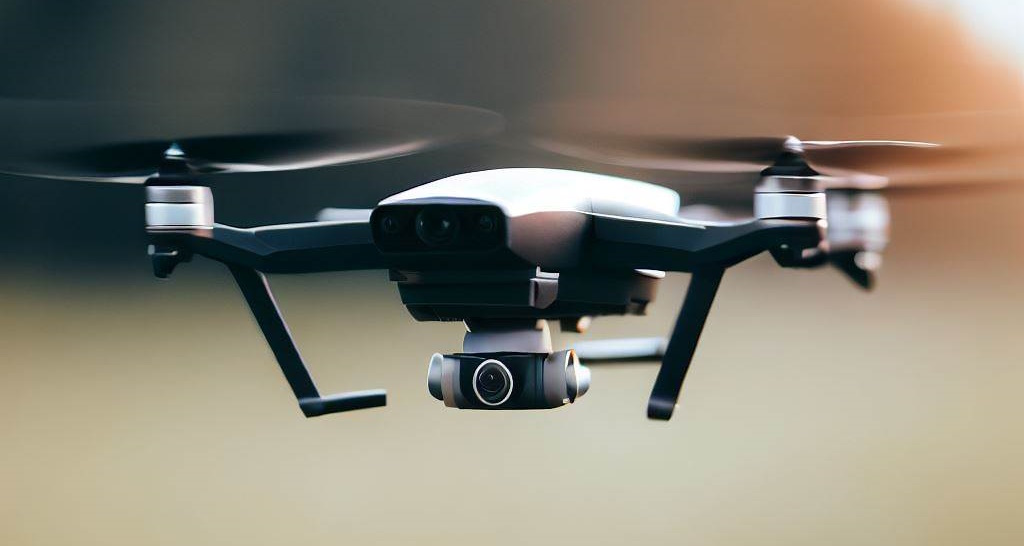Title: The Evolution of Drones: Exploring Key Factors and Challenges in a Technological Frontier
Introduction
Drones, also known as unmanned aerial vehicles (UAVs), have emerged as a revolutionary technology with vast applications across various industries. In this article, we delve into the multifaceted world of drones, analyzing key factors that impact their development, including drone models, telecoms, virtual reality (VR), augmented reality (AR), artificial intelligence (AI), and surveying. By examining the tradeoffs and challenges associated with these factors, we gain insights into the complex landscape of drone technology. Moreover, we emphasize the significance of considering the broader impact when making decisions about drones, ensuring responsible and ethical implementation.
Drone Models: Versatility Meets Specialisation
Drone models encompass a wide range of designs, each tailored to specific applications. From compact consumer drones for recreational purposes to industrial-grade drones equipped for specialized tasks, such as aerial inspections and deliveries, the variety of models reflects the versatility of this technology. Tradeoffs exist when selecting a drone model, primarily between payload capacity, flight time, and manoeuvrability. While some models prioritize longer flight times, sacrificing payload capacity, others focus on enhanced manoeuvrability at the expense of endurance. The choice of drone model largely depends on the intended application and the specific requirements of the task at hand.
Telecoms: Enabling Connectivity and Beyond
Telecommunications play a crucial role in drone operations, facilitating real-time communication, data transfer, and control. High-speed and reliable connectivity is essential for remote piloting, enabling drone operators to monitor flights, receive live video feeds, and respond to changing conditions effectively. Beyond connectivity, the integration of 5G technology holds tremendous potential for drone deployment. The low latency and high bandwidth of 5G networks can unlock advanced capabilities like autonomous flight and enhanced situational awareness, paving the way for more sophisticated applications in fields such as emergency response, agriculture, and infrastructure monitoring.
VR and AR: Enhancing Drone Operations
Virtual reality (VR) and augmented reality (AR) technologies offer innovative ways to enhance drone operations. VR simulations provide a safe and cost-effective training environment for drone pilots, allowing them to practice complex manoeuvres and respond to challenging scenarios. AR overlays digital information onto the real-world view, enabling operators to obtain real-time data and insights during flight. By integrating VR and AR, drone operators can benefit from improved situational awareness, precise navigation, and enhanced data analysis, ultimately increasing operational efficiency and safety.
AI: Empowering Intelligent Drones
Artificial intelligence (AI) plays a pivotal role in transforming drones into intelligent entities capable of autonomous decision-making. AI algorithms enable drones to process large volumes of data in real time, facilitating tasks like object recognition, path planning, and collision avoidance. The integration of AI empowers drones with the ability to adapt to dynamic environments, enhancing their autonomy and reducing human intervention. However, challenges arise concerning the ethical use of AI in drones, particularly in areas such as privacy, security, and accountability. Striking the right balance between autonomy and human oversight remains a critical consideration.
Surveying: Precision and Efficiency from Above
The field of surveying has experienced a significant transformation with the advent of drones. Unmanned aerial surveying offers efficient data collection and analysis for a wide range of applications, including land mapping, infrastructure inspection, and environmental monitoring. Drones equipped with high-resolution cameras, LiDAR, and photogrammetry capabilities provide accurate and detailed visual representations of terrain, structures, and landscapes. This technology enables faster data acquisition, reduces costs, and improves the safety of surveying operations. However, challenges exist regarding data accuracy, regulatory compliance, and airspace integration, demanding ongoing efforts to ensure reliable and standardized practices.
The Future of Drones: Responsible Integration
As drones continue to evolve and find new applications, it is crucial to consider their impact on various aspects, including safety, privacy, and the environment. Safety regulations and guidelines must be developed and implemented to mitigate risks associated with drone operations, ensuring the protection of people and property. Privacy concerns arise due to the potential for drones to capture sensitive information or invade personal spaces. Striking a balance between innovation and privacy safeguards is vital to foster public trust in drone technology.
Environmental considerations also come into play when deploying drones. While drones can contribute to sustainability efforts by reducing the need for manned flights and optimizing resource utilization, they can also have environmental impacts, such as noise pollution and carbon emissions. Integrating eco-friendly technologies and practices, such as electric-powered drones and efficient flight planning, can help minimize the environmental footprint of drone operations.
To maximise the benefits of drones and address the challenges associated with their use, collaboration among stakeholders is crucial. Governments, industry leaders, researchers, and communities need to work together to establish clear regulations, industry standards, and ethical guidelines. This collaborative approach ensures responsible and inclusive drone integration, taking into account diverse perspectives and addressing societal concerns.
Drones represent a transformative technology with immense potential across various sectors. The choice of drone model, integration of telecoms, utilisation of VR and AR, incorporation of AI, and advancements in surveying techniques are key factors influencing their development. However, careful consideration of the tradeoffs, challenges, and broader impact is essential to navigate this evolving technological frontier. By prioritizing safety, privacy, and environmental sustainability, we can harness the benefits of drones while fostering responsible and ethical practices. As we move forward, a collaborative approach will pave the way for a future where drones seamlessly integrate into our lives, unlocking new possibilities and creating positive impacts for society as a whole.


